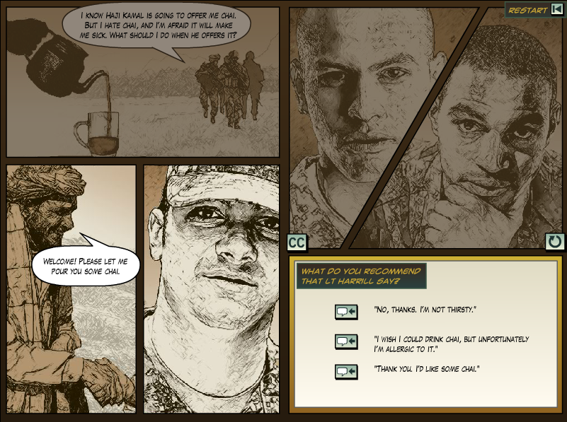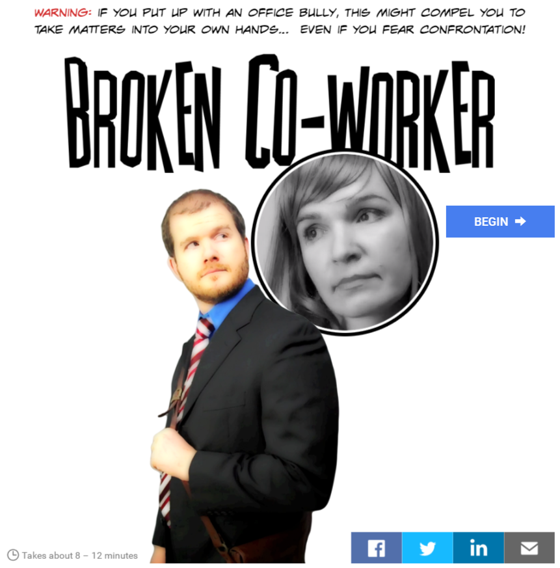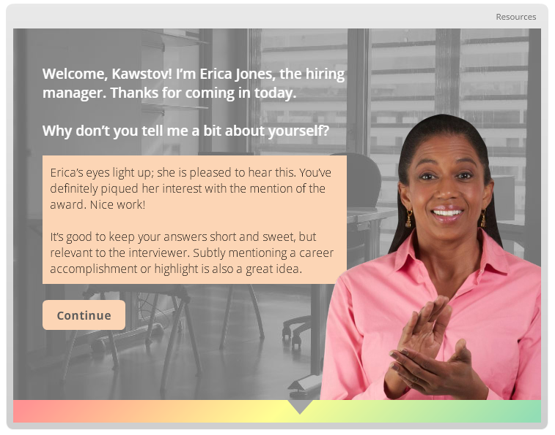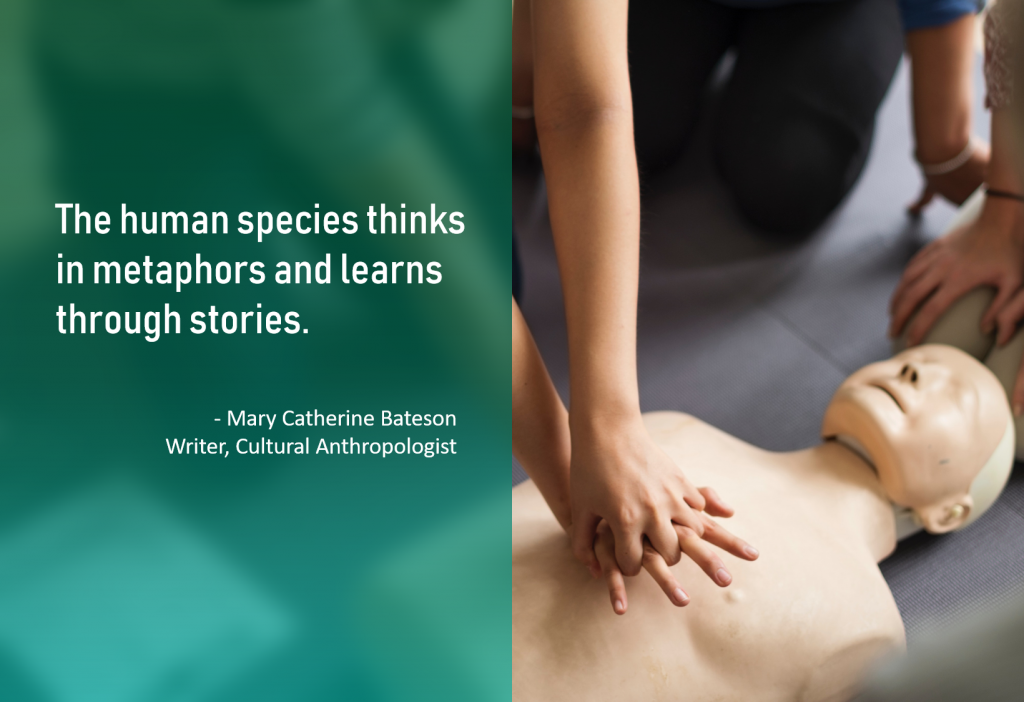In our last post, we defined Scenario-based Learning (SBL) and discussed its key components. Now, we are all set to explore various learning situations where SBL can be useful and see how.
Isn’t Scenario-based Learning applicable to all types of learning situations?
Yes, but the approach differs based on the tasks. From the learning design perspective the learning objectives can be categorized into the following two types:
1. When the Learning is Process Oriented –
These are typically information based and sequenced set of tasks that the learner must perform every time the relevant situation is triggered. For example, when helping a bank customer with regular documentation. Here the learners need to follow a checklist of actions to successfully implement the learning.
We can do this by interspersing the concepts with various levels of the scenario. So the learners go through a section that contains a part of the theory and then a relevant scene.
Tip: It is ideal to run a single story across all the sections. However, we can also use different plots for each chunk provided the environment and roles are relevant and consistent each time.
2. When the Learning is Critical Thinking Oriented –
Let us assume another situation where a hospital is training its nursing staff for post-operative patient care. The nurses must be aware of all the patient care procedures and be ready to respond to any unique situation that may arise.
Here, the learner needs to adapt his/her skills to the individual case and develop a solution based on concepts learned
Great! That means I can introduce the SBL to all types of learners, right?
Yes, but we may need to tweak it depending upon the target audience.
Mostly, a classic scenario-based eLearning solution favors the learners who are already familiar with the basic concepts. The content is branched and has an unstructured learning pattern that does not follow a structured linear flow but stimulates the learning experience based on the occurrence of events in a situation.
But if you try to introduce the same traditional scenario-based training to a learner who does not even have the necessary skills beforehand, the non-linear (branched) and response based interface may be quite overwhelming. In that case, you may need to trickle down the learning by introducing a small chunk of content first, followed by a small relevant scenario each time. However, the flow of information from one concept to another remains linear.
When to use Scenario-based learning?
Here are a few situations where scenario-based learning necessary to achieve a successful learning outcome.
1. Preparing for Risk-Averse Situations:

Where the consequences of errors are high. The learner gets a simulated environment to learn by making mistakes.
This amazing scenario-based training by Cathy Moore, where an inexperienced army officer needs to convince an Afghan warlord to help the US army is a perfect example of that.
2. Training for Workplace Culture:

Where the learner needs to respond to the various ethical dilemmas in the workplace.
This beautiful orientation course on workplace behavior by Anna Sabramowicz and Ryan Martin where an employee needs to manage workplace bullying shows how a scenario-based eLearning solution can be engaging and sticky.
3. Developing Interpersonal Skills:

Where the learner may need to put his soft-skills to use for completing the scenario.
This cool example by Nicole Legault teaches how simple deviations in a learner response affect the learning outcome during an interview.
Is that it? I thought there would be more situations.
Of course, there are. I just fell short of examples for them :-D. The various other areas where an SBL approach has proven to be effective are:
- The tasks involving extended periods to resolve in real-life
- The situations of rare occurrence
- Implementing trade-off strategies such as Project Planning
- Operational Training such as aircraft navigation
- Performing Research and Analysis on critical data such as credit evaluation of a company
- Customer Service such as a sales pitch where the marketing executive needs to adapt to unexpected and rarely occurring scenarios.
And the list continues…
Tip: Scenario-based Learning works best when the learner needs to interact with the situation multiple times, and each response adds weight to the outcome of the scenario.
What Next?
By now you must be developing some ideas of your own; situations where scenario-based learning form of instructional design might be useful. In the next post, we will discuss a simple approach on how to implement scenario-based learning.
